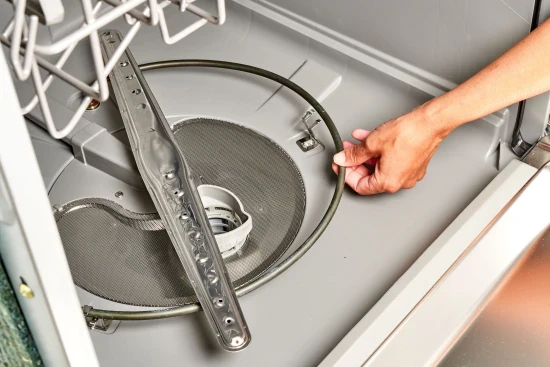Let's face it – figuring out how much your home renovation will cost can feel like trying to hit a moving target. One contractor quotes you $50 per square foot while another says $200, and suddenly you're wondering if they're even talking about the same project.
I've been there. After renovating my 1970s fixer-upper last year, I learned the hard way that renovation costs aren't as straightforward as we'd like them to be. But understanding the price per square foot can give you a decent starting point – as long as you know what actually goes into those numbers.
The Short Answer (That Nobody Wants to Hear)
If you're skimming for a quick number, I hate to disappoint you, but here's the reality: home renovation costs typically range from $10 to $400+ per square foot. Yeah, that's an enormous range. Not helpful, right?
That's because asking about renovation costs per square foot is a bit like asking "how much does a car cost?" Without knowing whether you're buying a Honda or a Ferrari, it's impossible to give a meaningful answer.
But don't click away just yet – I promise we'll break this down into something actually useful.
Cost Ranges by Renovation Type
Different types of renovations have dramatically different price points. Here's what you might expect to pay in 2025:
Cosmetic Renovations: $10-$60 per square foot
Think fresh paint, new fixtures, updated flooring, and minor repairs. These are the "lipstick on a pig" changes that make a space look nicer without moving any walls or touching plumbing.
My friend Jen recently refreshed her 1,200 sq ft condo for about $25 per square foot. She painted every room, replaced dated light fixtures, installed new baseboards, and swapped out cabinet hardware. The total came to around $30,000, and the place looks dramatically different.
Mid-Range Renovations: $60-$150 per square foot
At this price point, you're looking at some layout changes, kitchen or bathroom updates (but not complete gut jobs), new flooring throughout, and perhaps updating some electrical and plumbing.
My own living room and kitchen renovation landed in this range at about $100 per square foot. We took down a non-load-bearing wall, installed new cabinets and countertops, added an island, put in hardwood floors, and updated lighting. We kept the same basic plumbing locations to avoid extra costs.
High-End Renovations: $150-$300 per square foot
Now we're talking about significant changes: completely gutting spaces, moving walls, relocating plumbing, adding high-end finishes, and possibly making structural changes.
My neighbors went this route with their historic home renovation. They preserved original details while completely modernizing a 100-year-old kitchen and adding a luxury primary suite. Their 1,800 square foot project cost about $250 per square foot, putting them right in the middle of this range.
Luxury Gut Renovations: $300-$500+ per square foot
These are the magazine-worthy transformations that involve architectural design, structural changes, premium materials, and high-end everything.
I toured a home in San Francisco that underwent this level of renovation. The owners incorporated custom cabinetry, imported Italian marble, smart home technology throughout, heated floors, and a complete reconfiguration of the space. The price tag? A cool $475 per square foot.
Cost By Room Type
Not renovating your entire home? Here's how costs typically break down by room:
Kitchen: $75-$450 per square foot
- Basic kitchen refresh ($75-$150/sq ft): New appliances, refinished cabinets, fresh paint, updated lighting
- Mid-range kitchen ($150-$250/sq ft): New semi-custom cabinets, quartz countertops, new flooring, updated layout
- Luxury kitchen ($250-$450+/sq ft): Custom cabinets, high-end appliances, luxury countertops, reconfigured space, possibly moving walls/plumbing
My sister's 120 sq ft kitchen renovation cost about $36,000 ($300/sq ft). She went with custom cabinets, quartz countertops, and a fancy gas range, but kept the same layout to save on plumbing costs.
Bathroom: $100-$600 per square foot
- Basic bathroom update ($100-$200/sq ft): New fixtures, fresh tile, updated vanity, paint
- Mid-range bathroom ($200-$350/sq ft): Complete replacement of all fixtures, custom shower, new flooring, possibly some layout changes
- Luxury bathroom ($350-$600+/sq ft): High-end everything, steam showers, soaking tubs, heated floors, custom tilework
Small bathrooms can be deceptively expensive per square foot because they pack in so much plumbing and specialty items into a tight space. My half bath renovation (25 sq ft) cost $7,500 – that's $300 per square foot for what seemed like a simple project!
Living Areas: $30-$200 per square foot
- Basic living room/bedroom ($30-$80/sq ft): Paint, flooring, lighting
- Mid-range ($80-$150/sq ft): Adding built-ins, architectural details, possibly removing/adding walls
- High-end ($150-$200+/sq ft): Structural changes, luxury flooring, custom millwork, smart home integration
Basement: $50-$300 per square foot
- Basic finishing ($50-$100/sq ft): Simple walls, basic flooring, minimal electrical
- Mid-range ($100-$200/sq ft): Adding bathroom, proper egress, better finishes
- Luxury ($200-$300+/sq ft): Home theater, wet bar, luxury bathroom, high-end finishes
Additions: $200-$500+ per square foot
Building new space costs more than renovating existing space because you're creating structure from scratch. A friend's 400 sq ft family room addition in Chicago cost $180,000 – that's $450 per square foot after factoring in architecture fees, permits, foundation work, and connecting it seamlessly to the existing house.
Regional Cost Variations
Where you live drastically affects renovation costs. Here's a rough comparison (using mid-range renovations as a baseline):
- Northeast/New England: 15-20% above national average
- West Coast: 10-30% above national average
- Midwest: 5-15% below national average
- South: 10-20% below national average
But even within regions, costs vary enormously. My cousin paid about $40 per square foot for a basic kitchen refresh in rural Michigan, while a similar project cost me $85 per square foot in suburban Illinois.
Urban areas almost always cost more than rural areas due to higher labor costs, stricter building codes, and logistical challenges like parking and material delivery.
The Hidden Cost Multipliers
Certain factors can dramatically increase your per-square-foot costs:
Age of Home
Older homes often hide surprises – knob and tube wiring, asbestos, lead paint, rotted subfloors. My 1900s bathroom renovation uncovered hidden water damage that added $3,000 to the project.
Structural Changes
Moving load-bearing walls requires engineering, permits, and often steel beams – easily adding $5,000-$25,000+ to your project.
Building Code Updates
Once you open walls, you may be required to bring everything up to current code – especially plumbing and electrical. My friend's simple kitchen remodel triggered a full electrical panel upgrade, adding $4,500 to the project.
Access Issues
Limited access for materials and construction can add 10-15% to labor costs. A colleague renovating a 5th-floor walkup apartment paid a premium for every delivery because everything had to be carried up stairs.
Supply Chain and Market Conditions
We can't ignore the post-pandemic reality: material costs have fluctuated wildly, and labor shortages continue to affect pricing in many markets. My neighbor's deck rebuild doubled in cost from 2019 to 2023 due to lumber prices and contractor demand.
DIY vs. Professional: The Real Cost Difference
It's tempting to think you'll save by DIYing, but consider:
- DIY typically costs 40-60% of professional work in materials alone
- Professional work often includes warranties and guarantees
- Time is money – a pro might finish in weeks what takes you months
- Mistakes can be costly – my friend's DIY plumbing fix led to a $5,000 water damage repair
That said, strategic DIY can make sense. I saved about $7,000 by doing my own demolition, painting, and trim installation while hiring pros for the specialized work.
How to Calculate Your Realistic Budget
Here's a more practical approach to budgeting your renovation:
- Determine your renovation tier: Basic, mid-range, or luxury
- Calculate rough square footage of areas to be renovated
- Multiply by the appropriate range for your project type and region
- Add 15-30% contingency for unexpected issues (older homes need more)
For example:
- 200 sq ft kitchen × $200/sq ft = $40,000 base budget
- Plus 20% contingency = $48,000 realistic budget
Another strategy I've found helpful: decide your absolute maximum budget, then subtract 20% for contingency. Plan your renovation based on the lower number, keeping that 20% in reserve for surprises.
Renovation Costs Per Square Foot: Real Examples
Let me share some real projects from friends and family to give you a better sense of actual costs:
- Basic 5×8 bathroom refresh in Atlanta: $8,500 ($212/sq ft)
- Mid-range 12×15 primary bedroom in Chicago suburbs: $18,000 ($100/sq ft)
- High-end 200 sq ft kitchen in Boston: $95,000 ($475/sq ft)
- Basic 1,000 sq ft basement finishing in Kansas City: $65,000 ($65/sq ft)
- Luxury 350 sq ft addition in San Diego: $175,000 ($500/sq ft)
The Bottom Line
Renovation costs per square foot are all over the map because every project is unique. Rather than focusing solely on square footage, consider:
- The level of finishes you want
- How much layout/structural change is involved
- Whether you're touching high-cost areas like kitchens and baths
- The age and condition of your home
- Your local market conditions
And remember – whatever budget you calculate, add that contingency. In my experience renovating three homes, I've never once come in under budget, but having realistic expectations from the start made the process much less stressful.
The most important thing I've learned? The cheapest renovation is often not the most economical in the long run. Quality work that stands the test of time might cost more upfront but saves money on repairs and redoing work later. As my contractor says, "I'm not rich enough to buy cheap things twice."
Questions to Ask Your Contractor About Square Footage Costs
When getting quotes, dig deeper with these questions:
- "What exactly is included in your price per square foot?"
- "How do you handle unexpected issues once walls are opened?"
- "Are permits and design fees included in your estimate?"
- "What aspects of this project might cause the per-square-foot price to increase?"
- "Can you break down material versus labor costs?"
The answers will tell you a lot about how thorough and transparent the contractor is – and might save you from budget surprises down the road.
Renovations rarely go exactly as planned, but understanding what goes into the costs per square foot will help you set realistic expectations and create a budget that actually works. And that's worth its weight in Italian marble.






